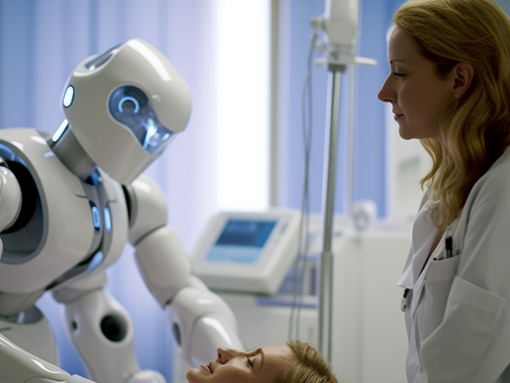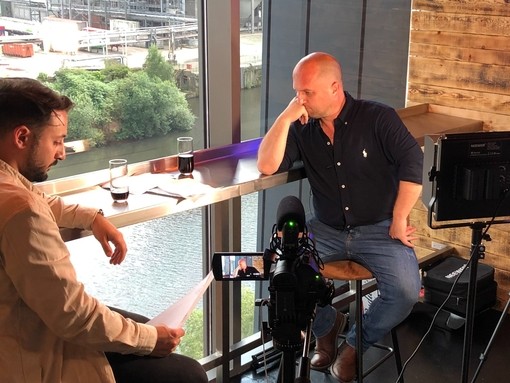
All The Small Things – Tiny inventions that changed the world
Contents
In the past, we have looked at some of the most impressive structures in the world – from bridges, to nuclear power stations, to other construction and infrastructure projects. Everything we’ve looked at so far has been on the large side… This time we take look at those tiny inventions that make all the difference – the unsung, unassuming heroes, the small inventions that changed the world, often without any fanfare at all.
Silicon Microchip
Two men solve the same problem

The first integrated circuit didn’t look like much, but its success shaped the modern world
We’ll start with the obvious tiny inventions. It sometimes feels as though human history, certainly within the last 100 years or so, can be split into two periods – the one before the microchip, and the one after it. Arguably the most important technological advance of all time, the tiny microchip is ever-present in your life, often in places you wouldn’t expect (your toaster has one). In the same way that humanity went from flying at 7 miles per hour across a field to 7 miles per second into space in less than 50 years thanks to combustion engines and the rocket, the microchip has accelerated technological progression like nothing else.
A microchip contains what is known as an integrated circuit. Jack Kilby and Robert Noyce were two engineers who were, separately, looking for the answer to the same problem in 1959 – how to fit more into less. The integrated circuit was an invention that was desperately needed as fledgling computers began to appear, as more power required more space and more components. The microchip connected all the wiring, capacitors and electrical circuitry onto one board smaller than a fingernail.
They are built on a layer of incredibly thin material, usually silicon (it’s a semiconductor). A layer of silicon dioxide is deposited on the silicon, then a layer of photoresist (light-sensitive material) which hardens the areas light is exposed to. Gas is then used to etch into the remaining soft surfaces with the pattern of the circuit, with conducting paths between components created by overlaying aluminium.
The silicon microchip blew the doors open for technological innovation – Robert Noyce went on to form a little start-up called Intel and invented the microprocessor in 1968. Jack Kilby went on to invent the portable calculator. The world was changed forever.
Electric Pickups
Why your guitar gently weeps

Jimi Hendrix makes his single-coil pickups sing like only he could
Generically, a pickup device is a variable reluctance sensor that captures or senses mechanical vibrations. Faraday’s laws state that varying a magnetic field will induce an electrical current into a conductor passing through its field. Standard magnetic pickups consist of either one or several magnets with a coil of wire wrapped around. The motion of the metal instrument strings vibrating produces an alternating current which can then be transferred along a cable to an amplifier.
Pickups have been around long before the widespread application in guitars, but Gibson technician Lloyd Loar first designed a device in 1924 where the vibrations of the strings passed through the bridge of a viola to the magnet and coils and thus created a weak electrical signal.
After much further advancement, the pickup became an essential part of live music, particularly for guitarists playing live – in dance hall Big Band and beyond – as they struggled to compete with the volume of other instruments. Enter Mr Leo Fender. While pickups in semi-acoustic guitars were doing a job in big venues, their hollow nature meant they were prone to start feeding back at high volume (where a high-pitched wail starts as a sound loop exists between the input and the output amp). With this in mind, Fender designed a slim, solid, flat-bodied guitar with two-single coil pickups which would eventually be named the Fender Telecaster – and thus invented the modern electric guitar as we know it.
Pickups are seen in many forms in many different types of guitars, producing a wide variety of tonal qualities. Given that the guitar, particularly the electric guitar, has had such a prominent role in shaping musical history over the past 60 years, it’s worth taking time to appreciate the humble pickup – whether it be the bright, crisp sound of the single-coil or the thick, warm growl of a humbucker, we’ve got a lot to thank them for.
Lasers
Light shows and so much more

Lasers can provide an amazing light show when you’re on stage
Most people know what a laser is, but we bet you didn’t know that is actually stands for Light Amplification by Simulated Emission of Radiation. A laser is as it says on the tin, a highly concentrated, narrow beam of light.
The first laser was constructed in 1960 by Theodore H. Maiman based on previous theoretical work by a number of scientists including Albert Einstein. This first functioning laser pulsed when in operation and was made out of a flashlamp-pumped synthetic ruby crystal, producing a red light.
You might have noticed in the description of what a laser is the phrase “Emission of Radiation”. You don’t have to worry though – laser radiation is not in itself harmful and behaves like ordinary light – it’s not like the sort of radiation emission you might find in a nuclear power plant. Normal applications of lasers simply don’t have powerful enough beams to do any damage.
Lasers have many uses and are categorised as such. This categorisation ranges from class I (CD players, printers) to class IV (industrial lasers, light shows). It’s when you look at this list you realise just how many applications the laser has.
Take the CD player, for example. Made from plastic, a thin layer of aluminium and a protective layer of laquer, Compact Discs have been around since the 1980’s and in the 1990’s and 2000’s became the number one way of storing data. Inside a CD player there is a tiny laser beam with a small electronic light detector. As the disc spins at around 500rpm, the laser flashes onto the shiny side, bouncing off the pattern of bumps and lands (flat areas). The lands reflect the light straight back, whereas the bumps scatter it. When the light reflects back, the photocell detects it, realizes it’s seen a land, and sends a burst of electric current to an electronic circuit that generates a 1. When the light doesn’t reflect back, the light detector sees nothing and generates a 0 – binary. A digital to analog converter decodes this binary and converts into pattern of electric currents.
Everything you watch or store on a CD or DVD is just a bunch of 1’s and 0’s. When you break it down to that, it’s pretty phenomenal. Almost as amazing as:
Flash Memory
Billions of Bytes in the Palm of Your Hand

The humble flash memory card allowed our computers and phones to get really small
It’s hard to believe that just 45 years ago, the most data you could store on an 8 inch floppy disk was just under 80kb. You can now buy a flash memory drive that hold 1 terabyte.
Modern flash memory, such as that found in memory sticks and modern phones has a far greater storage capacity against size than a hard disk (who remembers the old iPod Classic where you could feel the hard drive moving as you used it) and this makes it far more suitable for small devices.
How flash memory works is far too complicated for a short blog like this, but essentially, it involves our friends the 1’s and 0’s. With a combination of transistors and 1’s and 0’s representing the ‘on’ and off’ values, science has conspired to make it possible to store 15,707,308,968 times the amount of bytes in a space the size of your fingernail than our 1970’s floppy disk could manage.
YouTuber VSauce asked the question of how much data weighs – in this case, the internet. There are roughly 75-100 million servers in operation to make the internet work – 40 billion Watts of electricity. With some maths involving the number of electrons this is made up of, along with the mass of an electron, it can be estimated that there are just 50 grams of electrons in motion to make up the whole internet.
What’s even more amazing to think about is the mass of all the data in the world – every picture, video, piece of text, sound – everything. VSauce once again does the maths – based on a single 50 kilobyte email consisting of around 8 billion electrons, there being an estimated 5 million terabytes of information stored around the world, and the mass of an electron, it was concluded that the mass of EVERYTHING stored around the world is…
0.2 millionths of an ounce!
Find a job
Want to work on the biggest (or smallest) projects of the future? Check out our latest engineering roles Or, want to find out more about jobs in IT, data or tech, click here
















